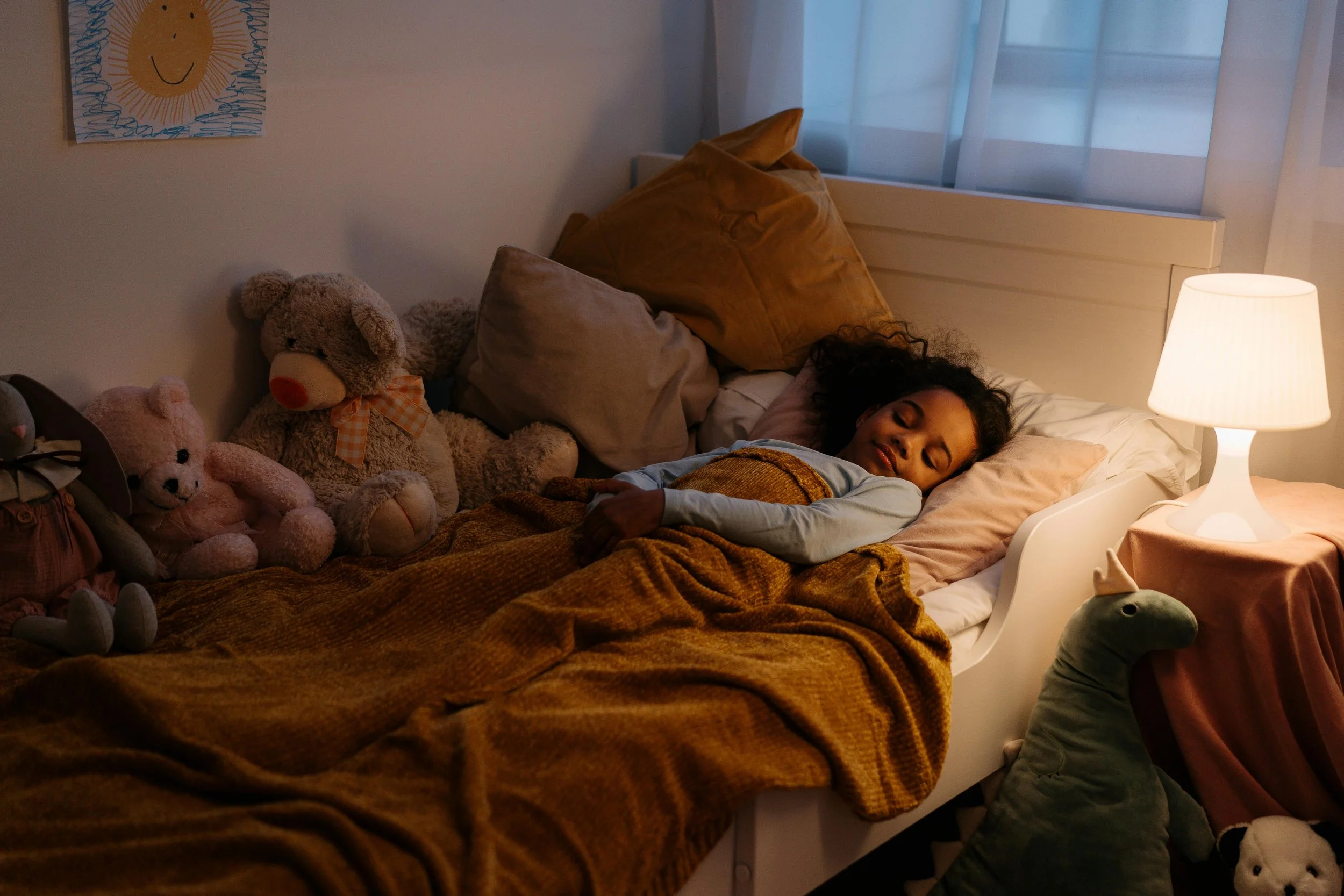Understanding Nightmares and Night Terrors in Toddlers
It’s one of the hardest parts of toddler sleep—when your little one cries out in the night and you’re not sure what’s wrong. Was it a bad dream? A night terror? Understanding the difference between the two can help you respond in a way that truly supports your child and gets everyone back to sleep a little easier.
In this post, we’ll dive into the differences between nightmares and night terrors, when they typically occur, and what you can do to comfort your little one.
Nightmares: When Do They Start and Why?
Nightmares are frightening dreams that typically occur during REM (rapid eye movement) sleep, often in the latter half of the night. They usually begin around the age of 2, with episodes peaking between ages 3 and 6. This increase coincides with the development of a child's imagination and memory. Factors such as stress, overtiredness, or exposure to frightening content can contribute to the frequency of nightmares.
How to Help Your Toddler with Nightmares
Night Light
While babies often sleep well in darkness, toddlers may feel more secure with a soft, warm night light to soothe their imagination and help them feel safe in their room.Comfort Object
Choose a comforting item like a favorite stuffed animal or blanket, and give it a special purpose. For example, tell your child that their teddy bear is filled with hugs and kisses, and if they wake up scared, hugging the bear will bring them your love.Leave the Bedroom Door Open
Letting your toddler hear familiar household sounds can be deeply reassuring. Leave their bedroom door slightly open and consider using a white noise machine to soften loud or sudden noises.Family Photo
Place a photo of your family somewhere your child can see it from their bed or crib. This visual reminder reinforces that you’re always close, even when they’re sleeping.“Grownups Always Come Back”
During the day and at bedtime, gently and consistently remind your child that you always return. Games like hide and seek can be a fun way to reinforce this message.Guided Imagery
One of my favorite techniques is guided imagery. Guided imagery aims to shift their focus to something positive. Our minds can only focus on a few things at once—so use that to your advantage.
Create a story based on something they love—maybe puppies, cars, or mermaids— and use vivid sensory language: describe colors, sounds, textures, and movements. These happy thoughts can help shift your child’s focus away from fear and make it easier to return to sleep. For example:
“Close your eyes and imagine you’re riding in a big red fire truck. The lights are spinning, and you’re wearing your shiny red helmet. You drive through the town, waving to the people. You hear the siren going woo-woo, and you’re on your way to save the day.”
Night Terrors
Night terrors are episodes of intense fear and partial arousal that occur during deep non-REM sleep, usually within the first few hours of the night. They can begin as young as 18 months and peak around ages 5 to 7. Unlike nightmares, children experiencing night terrors often appear awake but are unresponsive, inconsolable, and may not recognize caregivers. They typically have no memory of the event the next morning.
Night terrors tend to run in families. If a parent or close relative experienced (or still does experience) night terrors, sleepwalking, or sleeptalking as a child, a toddler may be more predisposed to night terrors.
How to Help During Night Terrors
Ensure Safety
Make sure your child’s sleep environment is safe and free of obstacles. Keep their bed low to the ground and remove anything they could trip over if they get up or thrash around.Stay Calm and Observant
Although it’s unsettling, you don’t have to wake your child during a night terror. Instead, quietly monitor the episode. Most resolve within 10–15 minutes without intervention.Gently Interrupt the Episode (if helpful)
If the episode seems prolonged, some parents find that gently changing the environment can help. Try carefully guiding your child into a different room or gently dabbing their face with a cool, damp washcloth.
Preventing Night Terrors
A consistent sleep schedule is key to helping your little one’s body and brain wind down properly before bedtime. When your toddler knows what to expect, their nervous system can settle into a predictable routine, which helps reduce the chance of night terrors.
It's also super important to avoid overtiredness. If your toddler isn’t getting enough sleep, whether during the day or at night, they’re more likely to experience night terrors. Keep an eye on their nap times and make sure they're getting enough rest overall.
And here's a little trick you might want to try: anticipatory waking. If your child tends to experience night terrors at the same time each night, gently waking them up 15 to 30 minutes before the usual episode can sometimes help break the cycle. Just keep them awake for a few minutes, then let them fall back asleep—this might be enough to reset their sleep pattern and prevent the night terror.
Final Thoughts
Understanding the difference between nightmares and night terrors can really help you feel more confident in handling those middle-of-the-night wakeups. Nightmares are all about offering comfort, connection, and a bit of creativity, like with guided imagery. Night terrors, on the other hand, need patience, a calm environment, and keeping your child safe while they ride out the episode. If these sleep struggles are happening often or leaving you feeling unsure, I’m here to help. You can book a consultation here!


